Day 1 :
Keynote Forum
Adrian Baranchuk MD FACC FRCPC
Queen`s University, Canada
Keynote: Case Reports contribute to knowledge translation
Time : 09:00-09:30
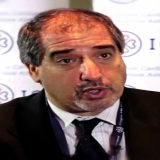
Biography:
Dr. Adrian Baranchuk, a native of Buenos Aires, Argentina, obtained his MD from the University of Buenos Aires in 1990. After qualifying in Internal Medicine and Cardiology at Sanatorio Mitre, Buenos Aires (1995), he completed a Clinical Fellowship in Cardiac Electrophysiology at the same institution under the supervision of Dr. Claudio Muratore.
He completed his Clinical Fellowship (1997) and joined the Arrhythmia Service until 2002 when he immigrated to Spain to join the Arrhythmia Service at the Fundacion Jimenez Diaz; working as a Research Fellow in the Animal Lab under the supervision of Dr. Jeronimo Farre. For his work in this lab, he was awarded with the 3rd Chinchona Award (Sponsored by 3M Foundation). During his stay in Madrid, Spain, he received a grant (as PI) from MAPFRE MEDICINA Foundation (Madrid, Spain). (Ultrasonic Analysis of Radiofrequency Lesion of the Pulmonary Venous Wall through Three-dimensional Intravascular Echography: Therapeutical Implications for Atrial Fibrillation Ablation).
Dr. Baranchuk was appointed as a Clinical Fellow in Electrophysiology at McMasterUniversity in September 2003, under the supervision of Drs. Carlos Morillo and Stuart Connolly. In 2004, he won the 1st Prize at the Fellows Forum, “5th Annual EP Fellows Course” (Sponsored by Medtronic) held in Montebello.
Dr. Baranchuk was appointed as an Assistant Professor of Medicine at Queen’s University to join the Division of Cardiology in June 2006. He is an active member of the Arrhythmia Service and has founded the EP Training Program in 2007. Currently the program has 3 Clinical Fellows.
In 2009 he received his cross-appointment with the Department of Physiology and Biomolecular Sciences.
His scholarly activity work includes sleep apnea and cardiovascular disease, specifically the link between sleep apnea and cardiac arrhythmias, complex ablation, cardiac devices and Electrophysiology and Electrocardiology education. He is a member of numerous editorial boards and reviewer of several journals. The recipient of a teaching award (Outstanding Contribution in the Core Internal Medicine Program) and nominated in 2009, 2010 & 2012 for teaching awards from the Faculty of Health Sciences. He is a member of the Mentorship Program at Queen’s University.
Dr. Baranchuk has been very active presenting his work at national and international meetings. In the last 4 years, he visited Argentina, Chile, Colombia, Venezuela, Russia, Brazil, Poland, Germany, Spain, USA; and several places in Canada.
His first book, Atlas of Advanced ECG Interpretation, has been recently released (REMEDICA, UK) and represents a big collaboration effort from well-recognized electrophysiologists of all around the world.
He has published more than 200 articles in well-recognized international journals, 20 book chapters and presented more than 150 abstracts all around the world.
He was promoted to the rank of Associate Professor of Medicine and Physiology in 2010.
Abstract:
Will be updated shortly
Keynote Forum
Jennifer L. Doherty-Restrepo, PhD, LAT, ATC
Florida International University, USA
Keynote: Does simulation-based training increase athletic training students’ clinical confidence and competence of performing a cardiovascular screening?
Time : 10:00-10:30
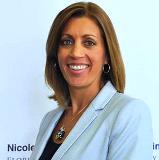
Biography:
Jennifer Doherty-Restrepo is a Clinical Associate Professor and Chair of the Department of Athletic Training in the Nicole Wertheim College of Nursing and Health Sciences at Florida International University. Her areas of expertise include andragogy, simulation-based instruction, and professional as well as continuing education in athletic training. Jennifer serves the Athletic Training Profession as a manuscript reviewer for the Journal of Athletic Training and the Athletic Training Education Journal. She is an Associate Editor for the Athletic Training Education Journal. Jennifer serves the Commission on Accreditation of Athletic Training Education as a site visitor. Additionally, she is the Chair of the University and College Athletic Training Student Committee of the Athletic Trainers’ Association of Florida. In recognition of her service and contributions to athletic training education, Jennifer was the recipient of the 2015 Athletic Trainers’ Association of Florida University and College Athletic Trainer of the Year award.
Abstract:
Context: The need for increased screening to detect cardiac diseases in preparticipation physical examinations is a focus in athletic training. Objective: To examine if a simulation-based training can increase athletic training students’ self-reported confidence and clinical competence in conducting a cardiovascular screening. Design: Pretest-posttest design. Participants: 25 first-year athletic training students. Intervention(s): Standardized cardiovascular curriculum. Main Outcome Measure(s): Learner self-reported confidence scale, multiple-choice knowledge exam, and objective structured clinical examination (OSCE) of cardiovascular assessment skills and auditory recognition of heart murmurs. Results: Self-reported confidence increased significantly from 4.4±2.1 to 9.2±3.0 post-intervention (F = 78.7, p < 0.001) with a moderately high effect size (h2=0.789). Knowledge exam scores increased significantly from 11.0±2.5 to 13.6±4.0 post-intervention (F= 5.3, p= 0.031) with a low effect size (h2=0.191). The history-taking assessment of the OSCE increased significantly from 2.6±1.6 to 5.7±1.7 post-intervention (F= 70.1, p< 0.001) with a moderately high effect size (h2=0.751). The clinical skills assessment of the OSCE increased significantly from 4.1±2.8 to 15.6±1.6 post-intervention (F= 415.4, p< 0.001) with a high effect size (h2=0.952). Conclusions: Simulation-based training is an effective tool for increasing students’ self-reported confidence and competence in conducting a cardiovascular screening.
Keynote Forum
Denis Larrivee
Loyola University Chicago, USA
Keynote: Contemplative revelations: Higher faculties in global nervous system integration
Time : 10:30-11:00
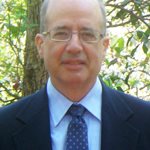
Biography:
Dr. Denis Larrivee is a Visiting Scholar at Loyola University Chicago and has held professorships at the Weill Cornell University Medical College in New York City and Purdue University, West Lafayette, Indiana. A former fellow at Yale University's Medical School and Department of Biology he received the Association for Research in Vision and Opthalmology's first place award for studies on photoreceptor degenerative and developmental mechanisms. He is the current editor of a text entitled Brain Computer Interfacing and Brain Dynamics with InTech Publishing and an editorial board member of the journals Annals of Neurology and Neurological Sciences (USA) and EC Neurology (UK). An International Neuroethics Society Expert he is the author of more than 50 papers and book chapters in such varied journals/venues as Neurology and Neurological Sciences (USA), EC Neurology (UK), Journal of Neuroscience, Journal of Religion and Mental Health, and IEEE Explore.
Abstract:
Contemplative meditation reveals a latent capacity for personal integration that enhances mental and physical heath through relational and transcendent ordering. Studies of a related meditative practice, mindfulness, reveal, for example, not only positive phenomenological benefits but also substantive physical changes in underlying neural and bodily factors, which are correlated with the duration and frequency of meditative practice. The extended intentional focus of contemplative meditation acquired from the Christian legacy, and then evolved in its later development, implicates an even greater breadth of neural deployment that assists personal integration. They suggest, thereby, a scope of disciplinary consolidation that exceeds that of mindfulness and so likely activates a broader and corresponding range of integrative processes that are latent for implementation as needed. The role played by the brain and nervous system in the self integration of higher faculties, however, is neglected in current philosophy of science models that guide empirical neuroscientific praxis; these latter, rather, are premised on the brain's mediation of coherent and coordinative operation instead of the systemically mediated, mutually constraining influences of peripheral and central neural networks. Indeed, results from contemplative meditation suggest that body and brain are unified through their ordering to higher systemic and ontological ends. Bodily performance in and through intentional actions, for example, shapes the brain and body's neural architecture to yield an integral performance unit. In like manner, higher faculties, like personal identity and intention, emerge from the extended peripheral network throughout the body to unify the whole individual in actions, such as those promoted in contemplative meditation. This paper will pursue an evidence based presentation, discussing the underlying neural events through which self autonomous actions promote and assist personal integration.
Keynote Forum
Russell D Weisz
Delray Medical Center, USA
Keynote: Extracellular matrix xenografts in the treatment of open fractures of the extremities with large soft tissue defects
Time : 11:00-11:30
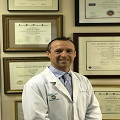
Biography:
Russell D Weisz is a board certified orthopedic surgeon who began his medical training at the State University of New York Health Sciences Center at Brooklyn where he graduated Magna Cum Laude. He then completed his orthopedic surgical residency at the Hospital for Joint Diseases/New York University and concluded his training with a one-year fellowship in orthopedic traumatology at Tampa General Hospital. Dr Weisz is the director of orthopedic trauma at Delray Medical Center, a level one trauma center in Palm Beach County Florida. He specializes in the treatment of complex fractures and the reconstruction of fractures that have not healed or have become infected. Dr Weisz is a clinical affiliate Assistant Professor at the Department of Surgery, Florida Atlantic University, Charles E Schmidt College of Medicine. Dr Weisz is involved in clinical research and is a principal investigator of the study “Assessing the efficacy of IV ibuprofen for treatment of pain in orthopedic trauma patients”.
Abstract:
Introduction: Application of biologic scaffolds such as extracellular matrix (ECM) products is a promising trend in the treatment of complex wounds in orthopedic trauma patients without the use of flap coverage.
Patients and Methods: Study included a cohort of patients with open fractures of bones and large skin defects. Wounds were complex in nature based on one of the following: 1) vascular injury with tissue ischemia, 2) large skin and soft tissue defects in challenging areas (e.g. plantar weight bearing aspect of the heel, high mobility zone of the antecubital fossa, etc.), 3) large area of exposed bone with no viable local rotational flap coverage, 4) type IIIB open tibia fractures. All patients underwent sequential debridements with provisional external and definitive internal stabilization of the skeletal injuries. Sequential xenograft applications of porcine urinary bladder ECM products (Cytel Wound Matrix and MatriStem MicroMatrix, ACell Inc. Columbia, MD) were performed from 2 to 4 times in each patient. In all patient’s negative pressure wound therapy (NPWT) was utilized.
Results: In all patient’s stable soft tissue coverage was achieved after xenograft implantation and regeneration of the granulation tissues which was followed by the split-thickness skin graft (STSG). Multiple applications of the ECM provided soft tissue coverage to a degree which alleviated the need for flap placement. In one area (heel) complete closure was achieved with the use of ECM sheets alone and without subsequent STSG.
Conclusions: The clinical outcomes demonstrated that even in challenging cases where local flap coverage of bone or neurovascular structures is not possible, sequential xenograft implantation allowed to achieve a stable soft tissue envelope. Different forms of ECM products are easy to apply in the presence of orthopedic hardware. In certain wounds, the complete closure can be achieved even without subsequent skin grafting. We recommend the relatively early application of xenograft.
Keynote Forum
Franz Muller
Hospital Barmherzige Bruder, Germany
Keynote: Peri-implant femoral fractures: The risk is more than three times higher within the proximal femoral nail compared with dynamic hip screw
Time : 09:30-10:00
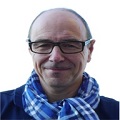
Biography:
Franz Müller is Consultant and Senior Surgeon in the largest catholic hospital in Germany. He is specialist in all kinds of orthopedic trauma incl. spine and pelvic, as well as endoprosthesis incl. revision surgery. He is first and senior author of more than 20 original papers, especially in spine surgery and trauma. In his vacations he is also working for Medecins Sans Frontieres.
Abstract:
Introduction: Information is lacking regarding incidence rates, treatment regimens, and outcomes concerning peri-implant femoral fractures (PIF). Therefore, we performed a retrospective study to provide scientific data concerning the incidence and outcome of PIF following osteosynthesis of proximal femoral fractures (PFF).
Material & Methods: We retrospectively included all patients who received osteosynthesis for PFF between 2006 and 2015 and in whom PIF was confirmed postoperatively. All available patients with PIF were contacted minimum one-year post-surgery.
Results: A total of 1.314 osteosynthesis procedures were performed, of which 705 were proximal femoral nails (PFNs), 597 were dynamic hip screws (DHSs), and 12 screwed appliances only. During the same period, 18 PIFs (1.4%) were reported. However, PIF was 3.7 times higher within PFN when compared to DHS (15/705:2.1% versus 3/597:0.5%; odds ratio: 3.7). The following analysis also included 8 patients with PIF who were referred from other hospitals, resulting in a total of 26 patients. Mean patient age was 84.8 years (range, 57–95), with a predominance in female (23x) and in the left femur (19x). PIF occurred after an average of 23.6 months (range, 1–81) post-surgery. The fractures, most of which were spiral-shaped, were most commonly treated with locking plate osteosynthesis. The surgical revision rate was 7.7%, and the one-year mortality was 23.1%. At an average of 43.0 months (range, 12–100) post-surgery, it was possible to contact 18/26 patients (69.2%), and their mean Parker Mobility Score was 5.2 points (range 2–9).
Conclusions: Peri-implant femoral fracture is a rare incident within the old age traumatology of PFF. However, based on our small number of cases, it occurred within PFN much more frequently compared with DHS. Locking plate osteosynthesis has been shown to be effective and reliable. Surgical revision and mortality rates do not appear to be increased when compared to those with the initial treatment of proximal femoral fractures.
